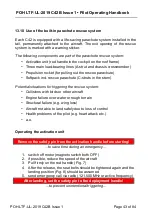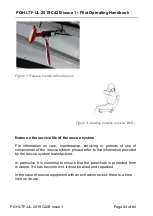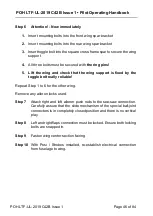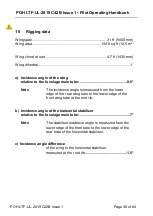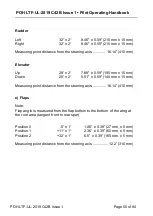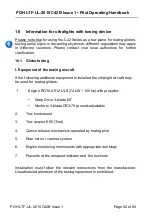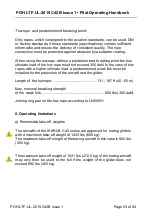
POH LTF-UL-2019 C42B Issue 1 • Pilot Operating Handbook
POH LTF-UL-2019 C42B Issue 1
Page 38 of 84
13.5 Stalls
In cruise flight configuration V
S1
(see operating limitations) the engine
cowling will be well above the horizon. Shortly before reaching V
S1
, there
will be a slight buffeting of the airframe. However, the aircraft is
controllable even in the stalled flight condition. Directional corrections are
to be made mainly with the rudder.
Example:
right wing low → rudder deflection to the left.
If the aircraft is stalled slowly with the elevator in detent, the aircraft will
enter a stable stall at full elevator deflection. The loss of altitude when
stalling from straight flight until horizontal flight is restored is up to:
Flap position 0 (cruising flight) ................................................... ca. 80 ft
Flap position 1 (take-off/landing) ............................................... ca. 80 ft
Flap position 2 (landing) .......................................................... ca. 120 ft
During a whip stall, the aircraft clearly pitches down (up to 40°). By slightly
releasing the elevator, airspeed will increase and the aircraft will return to
horizontal flight. The altitude loss can be up to 250 ft.
The aircraft reacts similarly in all flap positions.
Stall speeds for the various flap position are described in
chapter 1.1
"Airspeeds".
The stall speeds above will be affected by variations in take-off
weights.




















